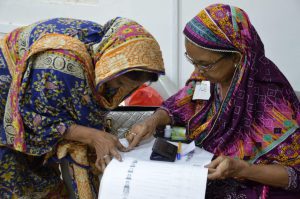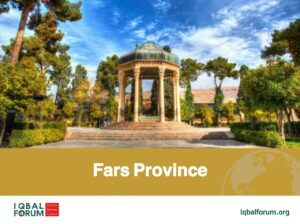History
The oldest evidence of human settlement in Bushehr Province dates back to the Mesopotamian civilization. Artifacts from the time of the Medes, Achaemenids, and Sassanians have been found in this province, witnessing the significance of this land among the cities of Iran in various historical periods. The province has been part of Fars and Hormozgan provinces at different times until Bushehr Province was officially formed in 1973 with two counties, Bushehr and Dashtestan. Today, its provincial divisions include 10 counties. The population of Bushehr is estimated to be 1,700,000.
Geography
Bushehr is bordered by Khuzestan and Kohgiluyeh and Boyer-Ahmad provinces to the north, Fars province to the east, the Persian Gulf to the south and west, and Hormozgan province to the southeast. It consists of a coastal plain in the western coastal margin and a mountainous part in the eastern strip ending in the southern Zagros.
Climate
The climate of Bushehr is warm and dry, and it is warm and humid in coastal areas. The temperature in this region reaches over 50 degrees Celsius on hot summer days. While the lowest temperature recorded for the northern cities has been -1 degree Celsius in winter. The best seasons to travel to Bushehr are winter, autumn, and early spring.
Counties of Bushehr Province
Bushehr, Dashtestan, Tangestan, Jam, Dashti, Deyr, Dalaki, Asaluyeh, Kangan, and Ganaveh are the 10 cities of Bushehr province.
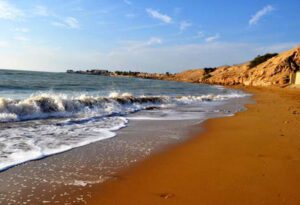
Bushehr Port
Bushehr is one of the oldest ports in Iran with a long history, known by various names such as Rishahr, Abu Shahr, and Lian.
In addition to abundant and lush palm groves and spectacular coasts, the Bushehr market, Bardestan Grand Mosque, Khormoj Castle, English Cemetery and General’s Grave, Jashak Salt Dome, Dehdashti Mansion, Golshan House, Tabib Mansion, Malek Mansion, Maritime Museum, historical texture of Rishahr, St. George’s Church, and Qavam Water Reservoir are among the historical sites of the city.
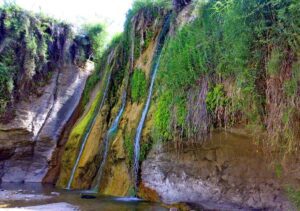
Dashtestan
Dashtestan is the second largest city in the province, with a reputation for its abundant palm groves and high-quality dates. Very hot summers and mild winters are the climatic features of this city.
The remaining ruins of Black Bardak Palace in Dorudgah village, the remaining ruins of the Great Cyrus Palace in southeast Borazjan, and the Chehel-Khaneh Caves in Sadabad county are the historical sights of Dashtestan.
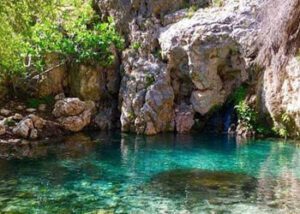
Tangestan
The name Tangestan is intertwined with brave and famous men. The historical house of Raeis Ali Delvari, several surviving historical castles from various historical periods, hot springs of Qucherak in Ahram, historical qanats, and Tal-e Kushk in Shahrabad amaze explorers and travelers to this place.
Jam
Jam is one of the southern cities of the province, placed close to the South Pars Gas Field. The presence of several important industrial centers in the country, including petrochemicals, gas industries, and refineries, has led to a large population imigration from all over the country to this city for work.
Pardis (Padri) Mountain, lemon and olive gardens, the historical and mountainous village of Harami Anari, Hanna Pond, Padri Garden, Padri Historical Qanat, and Binjishku are some of the tourist sites of this county.
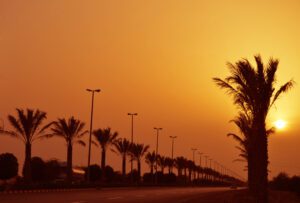
Ganaveh
Ganaveh is an astonishing and unique coastal city on the shores of the Persian Gulf. This city is dry and desert-like, with mountains to its north and northwest.
Ganaveh’s large market and spectacular, untouched beaches are popular and exciting for all Iranians and foreigners.
Accommodations
Hotels such as Pasargad, Plus, Yas Apartment Hotel, Khor Hotel in Ganaveh, Delvar Hotel, Sadi Hotel, Mahan Hotel, Sadra Guesthouse, Tohid Guesthouse, Hafez Guesthouse, Pars Guesthouse, Aseman Guesthouse, and Esteghlal Guesthouse, along with local houses and resorts offering a variety of local foods, beverages, and sweets, welcome travelers to Bushehr province.
In addition to these hotels, Hiron and Kahbaad ecotourism accommodations in Bushehr city, with their local and indigenous spaces, host travelers and tourists to this province.

Local Foods of Bushehr
You can taste the tastiest seafood of Iran in Bushehr. Bushehris have a special skill in flavoring and eliminating the unpleasant odor of seafood. Fish and shrimp are the main ingredients, and red pepper and Indian dates are the primer flavorings of most Bushehri foods.
Bushehri Gheymeh, steamed fish, shrimp stew, fish stew, fish Tah-Andaz, Yatimak, and Bushehri Daal lentil are just some of the unique meals you can try when traveling to the province. Desserts and sweets like Masghati, date Halva and Ranginak are also recommended for tourists in this province.
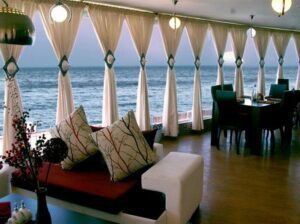
Restaurants
Tast flavorful foods at Midaf Restaurant, with its seafood, traditional and classic dishes, Gavam Restaurant with its colorful local dishes, traditional restaurants Shoneshin and Khatam, Gargur Restaurant, Belpassi chain restaurant, Gando Italian Restaurant, Khajoo’s Biryani serving Isfahan Biryani and various kebabs, San Marco Restaurant, Persian Gulf Restaurant, Bobo Fast Foods, Raphael, Ani, and Mosallas can make the trip to Bushehr memorable for everyone.
Besides, if you are interested in hot and cold drinks or various desserts and salads, Naji Cafe with its traditional atmosphere and Firouzeh, Kohan, and Honar cafes with their charming and calm environment will host you properly in Bushehr city.
Handicrafts
The sea and palm groves play a crucial part in the creation of handicrafts in the province. Mats, brooms, tablecloths, baskets, windmills, boxes, and caps with palm branches and leaves, various jewelries, boxes, wall hangings, decorative objects, and toys with shells, carpet weaving and Gorgor weaving, boat and ship making, Gabbeh and Gelim weaving, Aba weaving, and pottery are some handmade artifacts here.
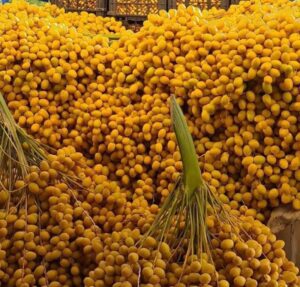
Souvenirs
Something is missing in your travel to Bushehr if you do not purchase its colorful and delicious souvenirs: From tasty and brilliant foods like dates, Kharak, and Rotab, date syrup, local wild herbs (such as Mangak, Parpin, and Kakol), date bread, palm cheese, Ardeh, Rashti Halva, date Halva, various local pickles, fish, and shrimp to handicrafts and jewelry made from shells.

Customs and Traditions
Music is an integral part of the customs and traditions in Bushehr. In celebrations and festivities, Neyanban and Tombak are played, and in mourning and lamentations, Dammam and Senj give a special color to the ceremonies. In addition to national celebrations such as Norooz and Yalda, traditions such as Noroozkhani (at the beginning of spring), Khayamkhani, Chavoshi khani (for welcoming travelers), Shakki, and Yazleh (jumping) are some local customs in Bushehr specially during gatherings and parties.
Rain seeking ceremonies, Nanposhi, healing ceremonies for the sick, and warming the Tabeh are also remarkable and interesting here.
In lamentations, traditional chest beating in Bushehr, playing Sheypoor and Senj, Sherweh singing, and Fayezkhani are customs for which Bushehris are famed.



